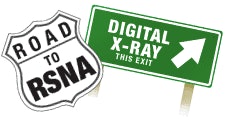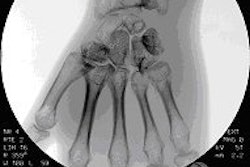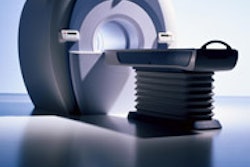Digital x-ray technology has advanced rapidly. And although the high price of digital radiography systems confined them to major hospitals and medical centers during the first years after their introduction, the proliferation of PACS networks that are affordable enough for community hospitals and imaging centers is pushing even smaller facilities to install DR.
Another digital x-ray technology, computed radiography, has filled a niche for imaging sites intent on taking advantage of the efficiency and cost-effectiveness of digital technology. Although DR holds advantages over CR in speed and workflow efficiency, CR continues to find new niche applications that keep the technology thriving.

Despite the initial purchase, installation, and start-up costs, DR technology can go a long way to compensate for staff and storage space shortages, and, along with a PACS, facilitates implementation of HIPAA record-keeping requirements.
In contemplating the purchase of digital systems, facilities need to hone in on such concepts as spatial resolution, grayscale bit resolution, signal-to-noise ratio, and detective quantum efficiency in order to make scientific assessments of different systems' performances.
Some DR systems function at half the radiation dose of screen-film x-ray systems, addressing a health concern that is getting plenty of attention. System prices are coming down, as are the required radiation dosages for imaging in the digital domain.
While visitors to the RSNA show will see some new hardware, the emphasis will be on greatly improved software upgrades to drive radiography deeper into the digital era.
To get more details about what's new in x-ray at this year's RSNA show, click on the links in each company's name below.



















